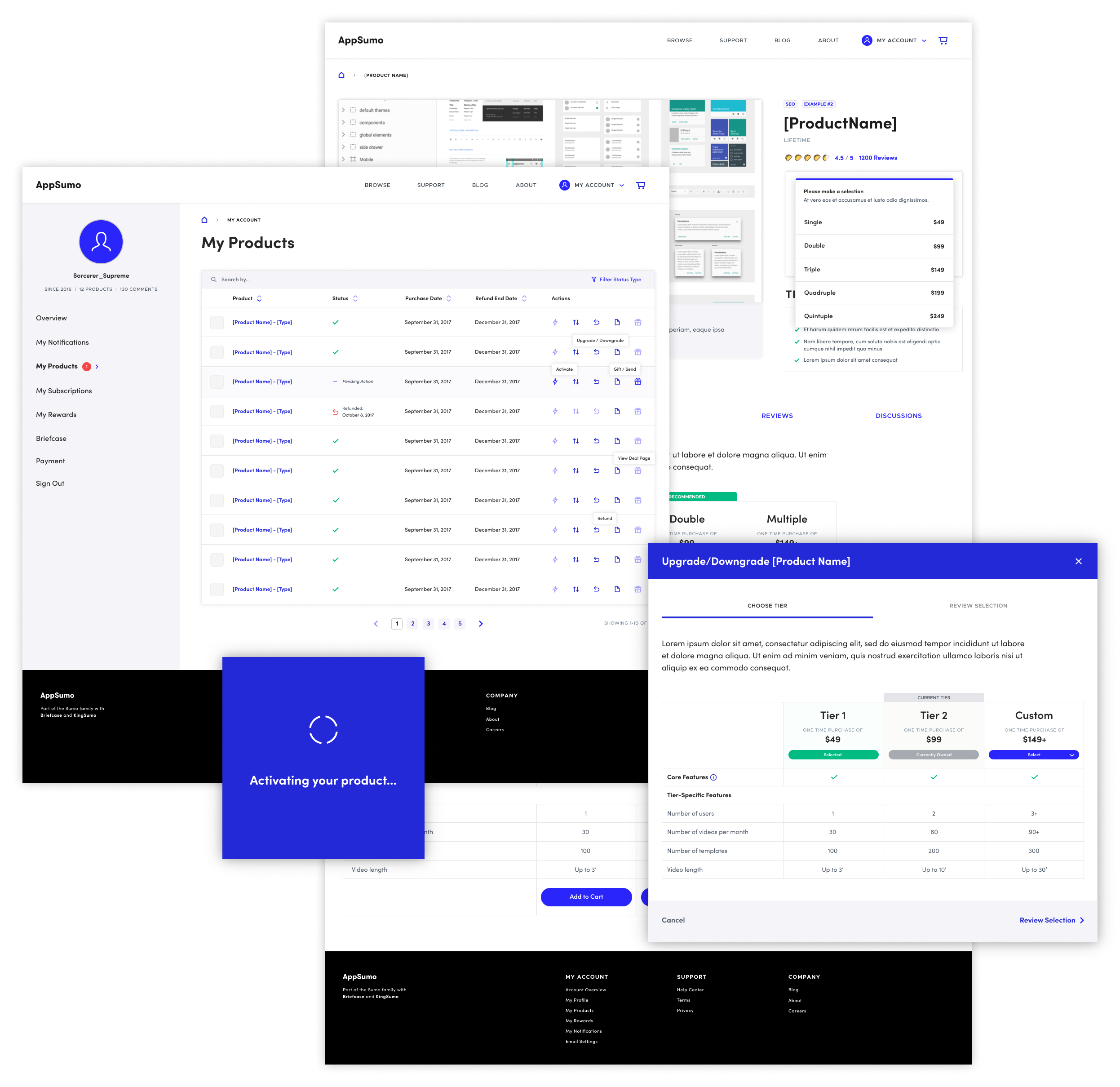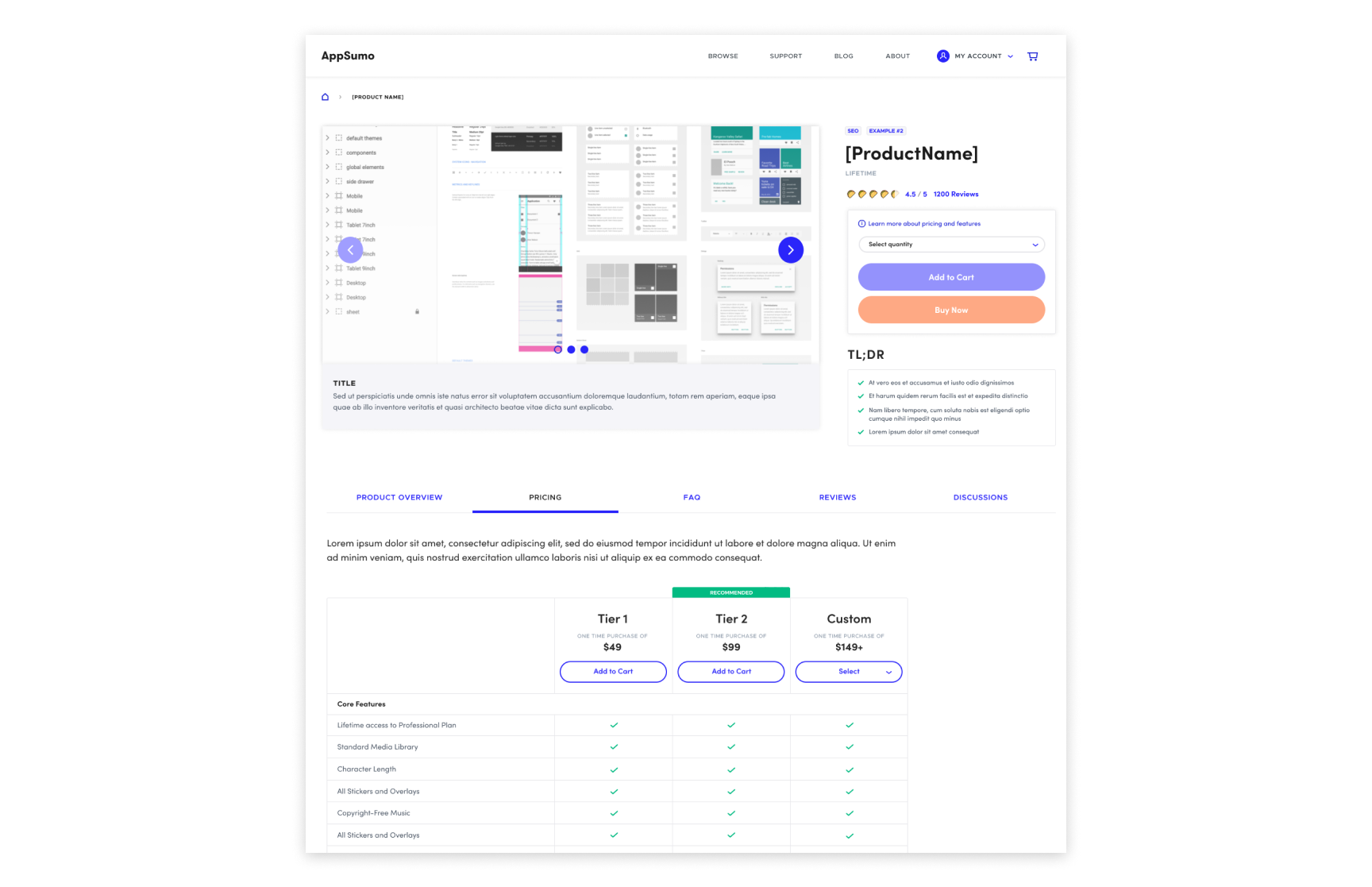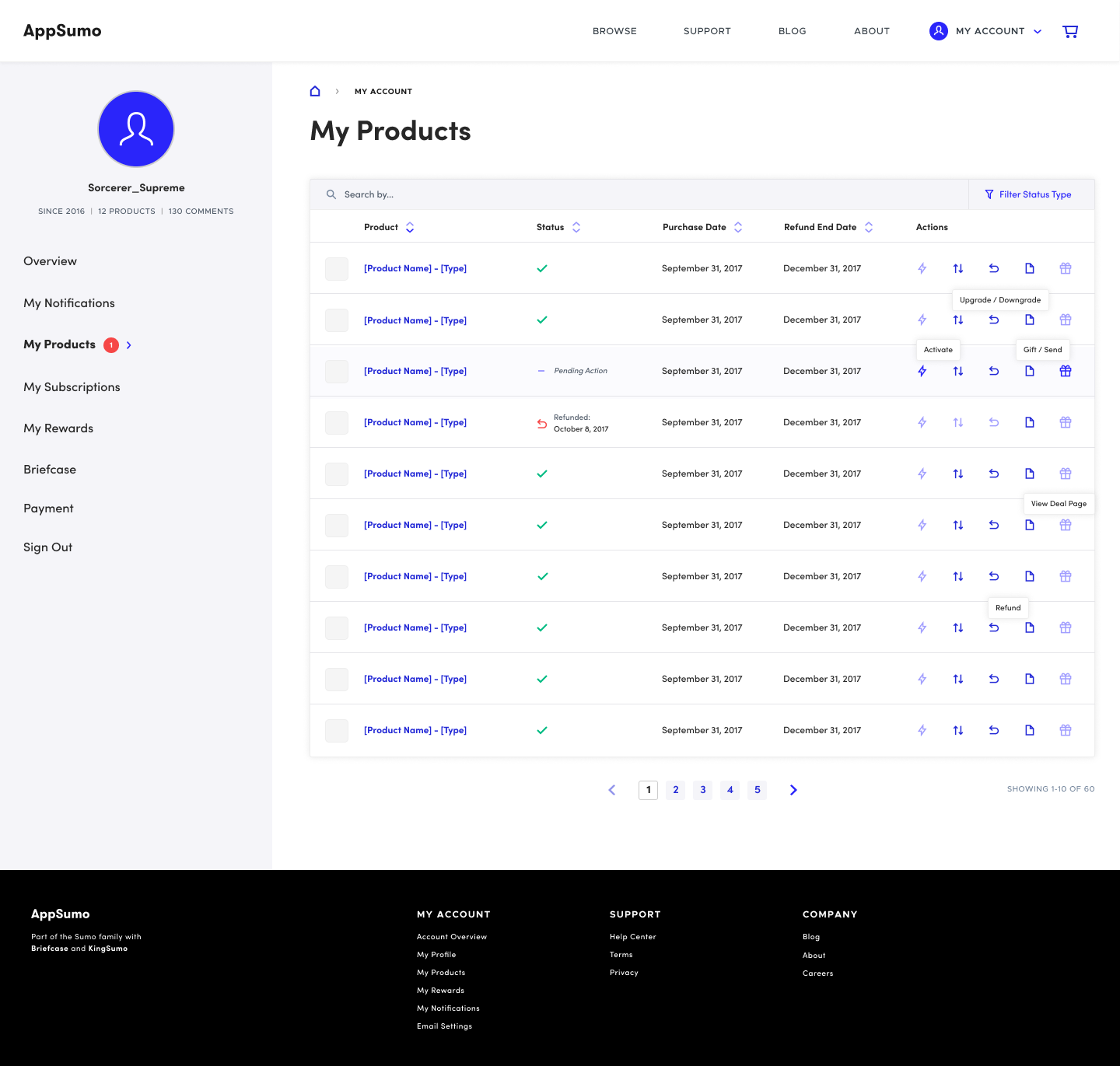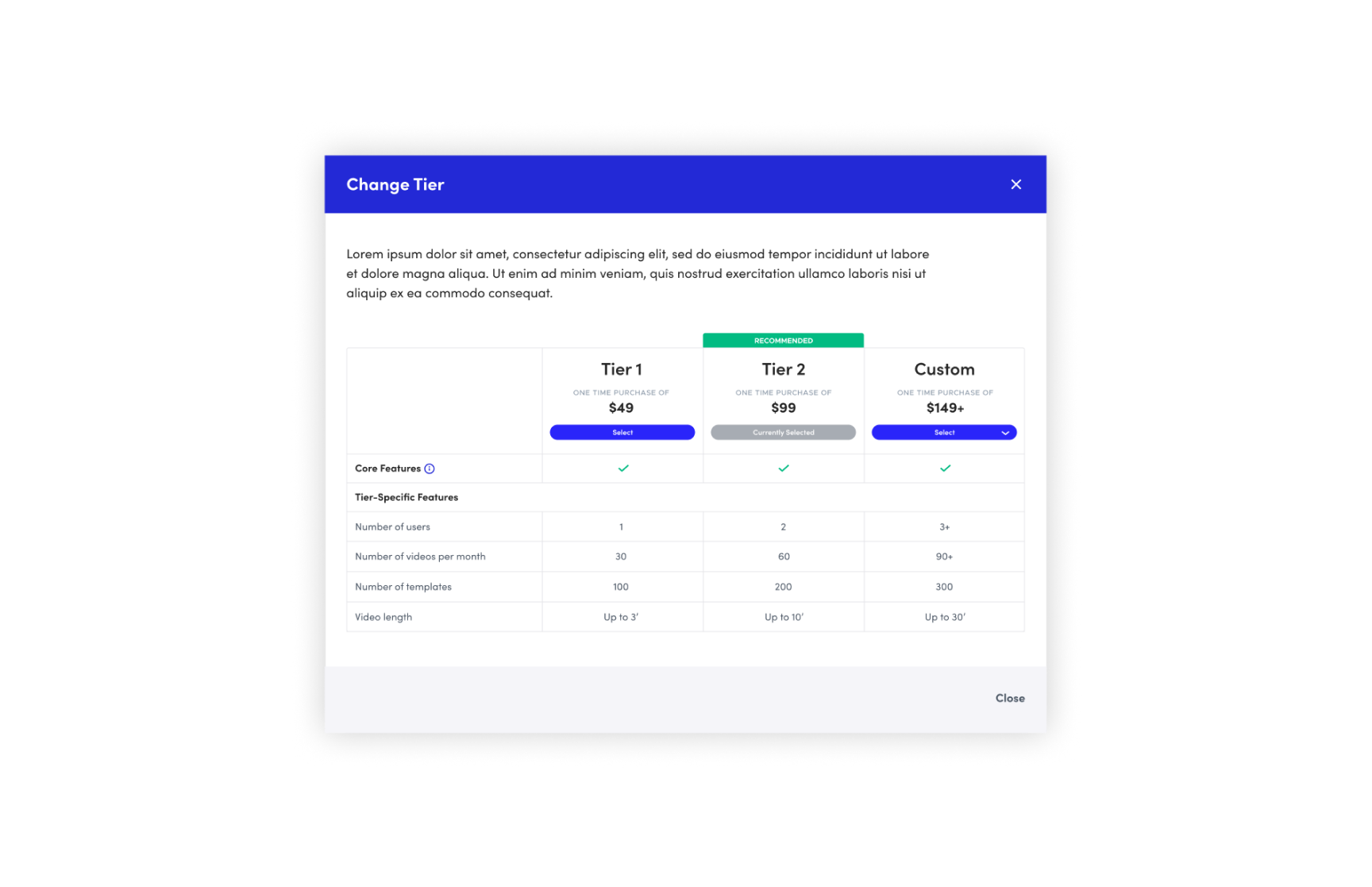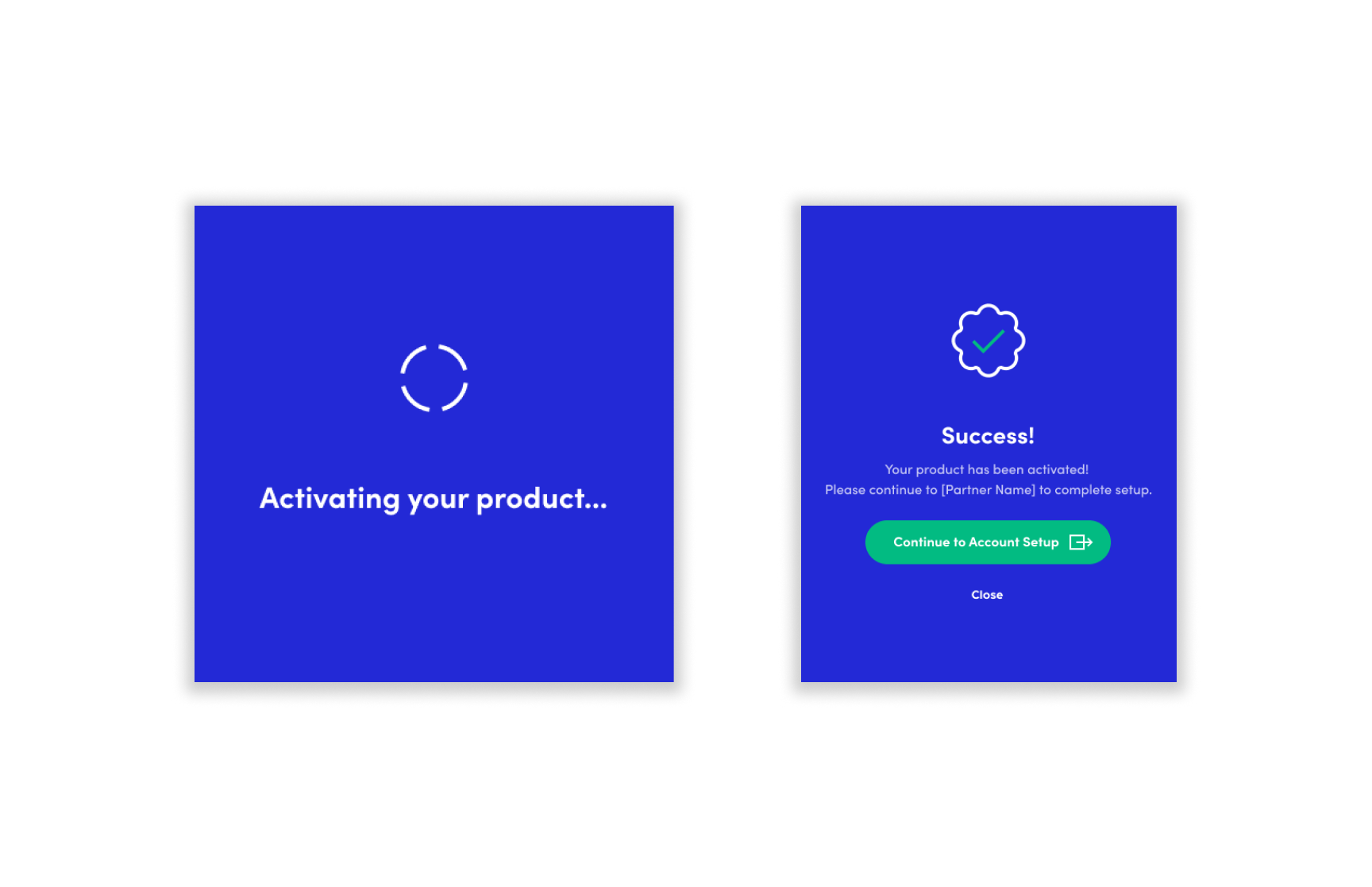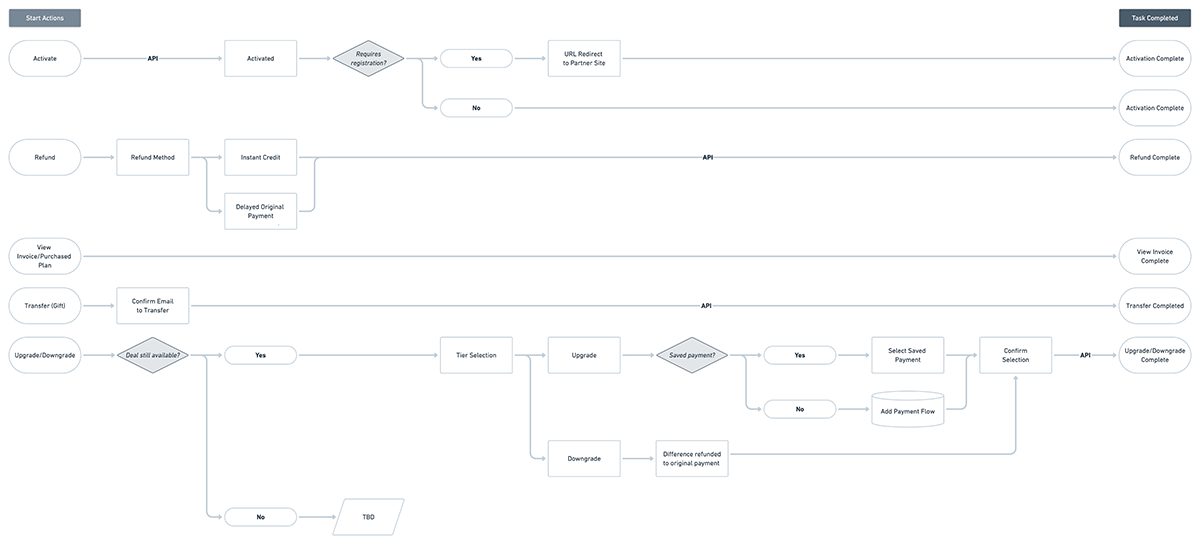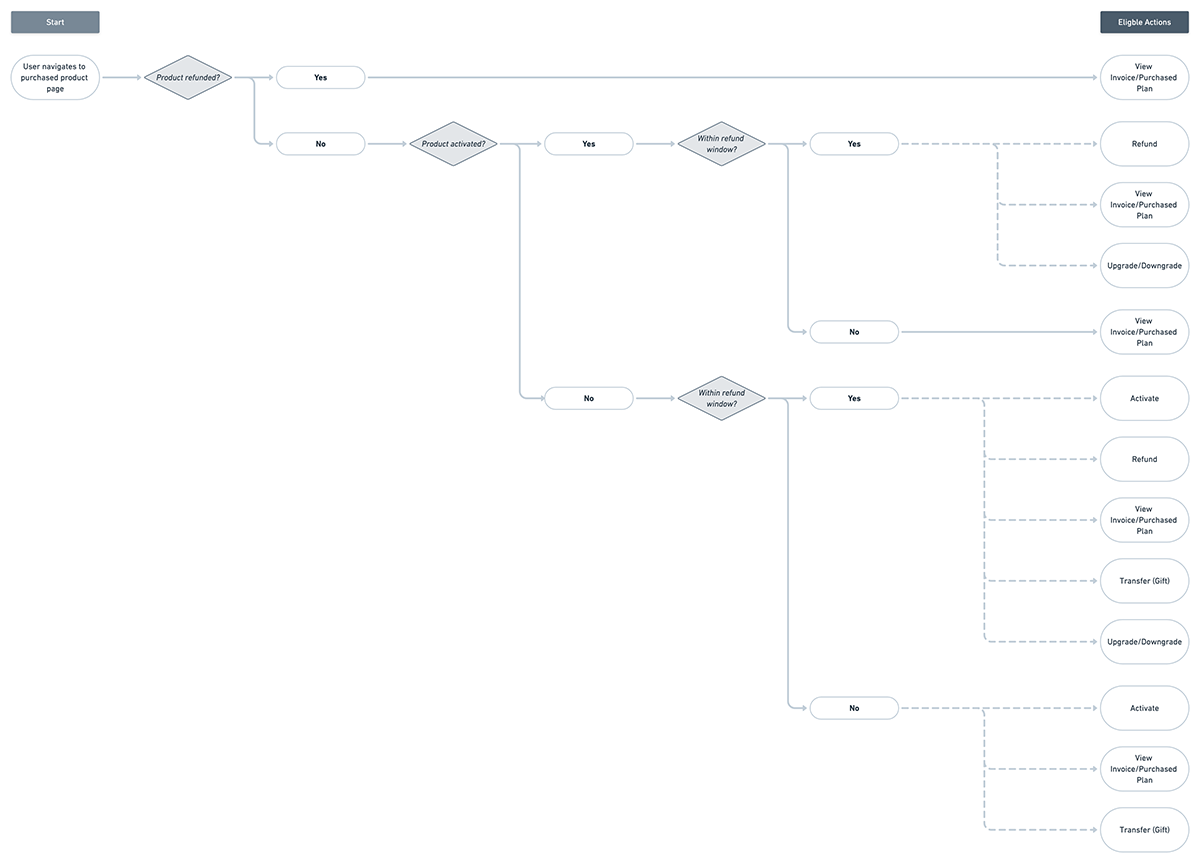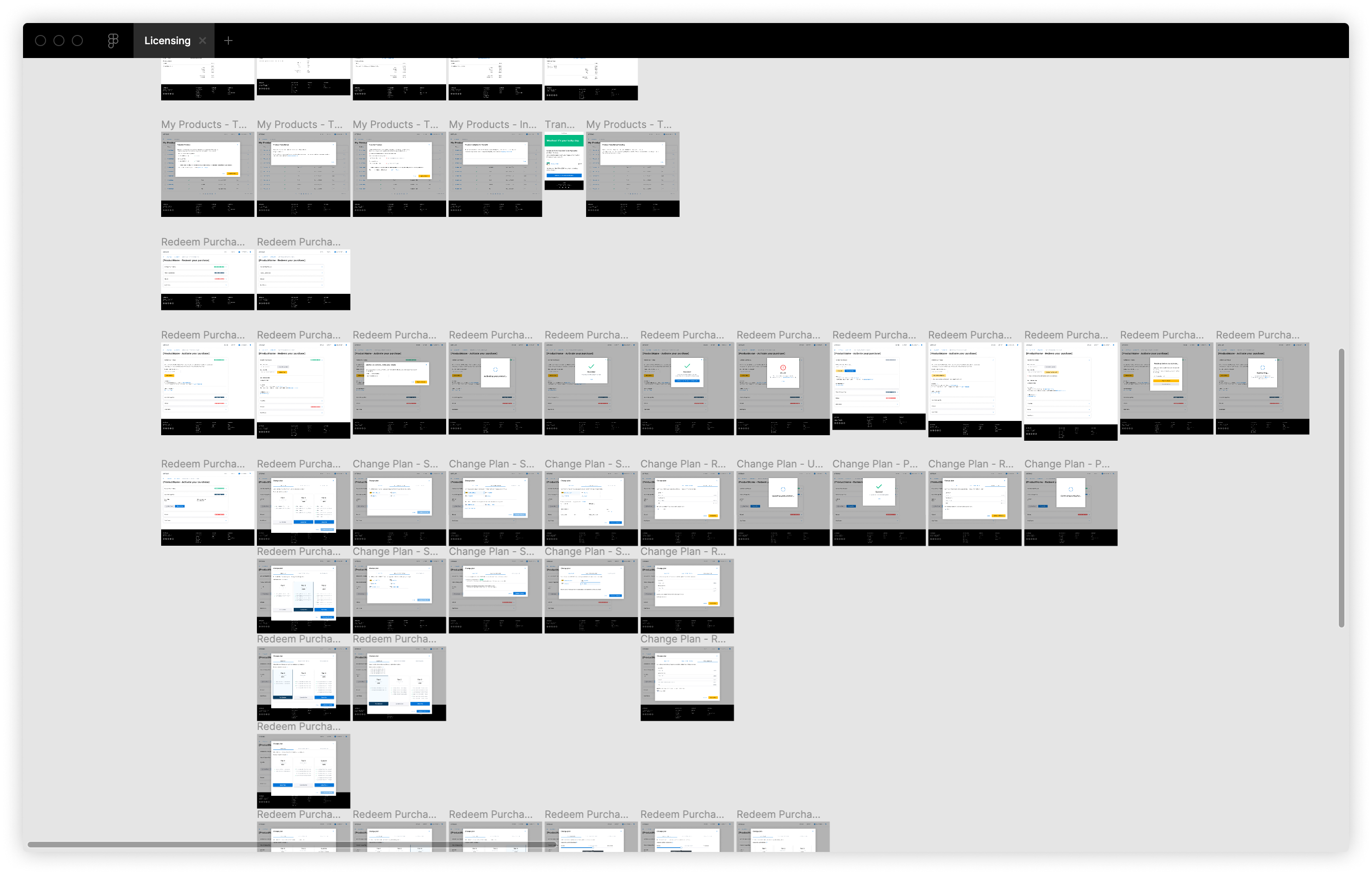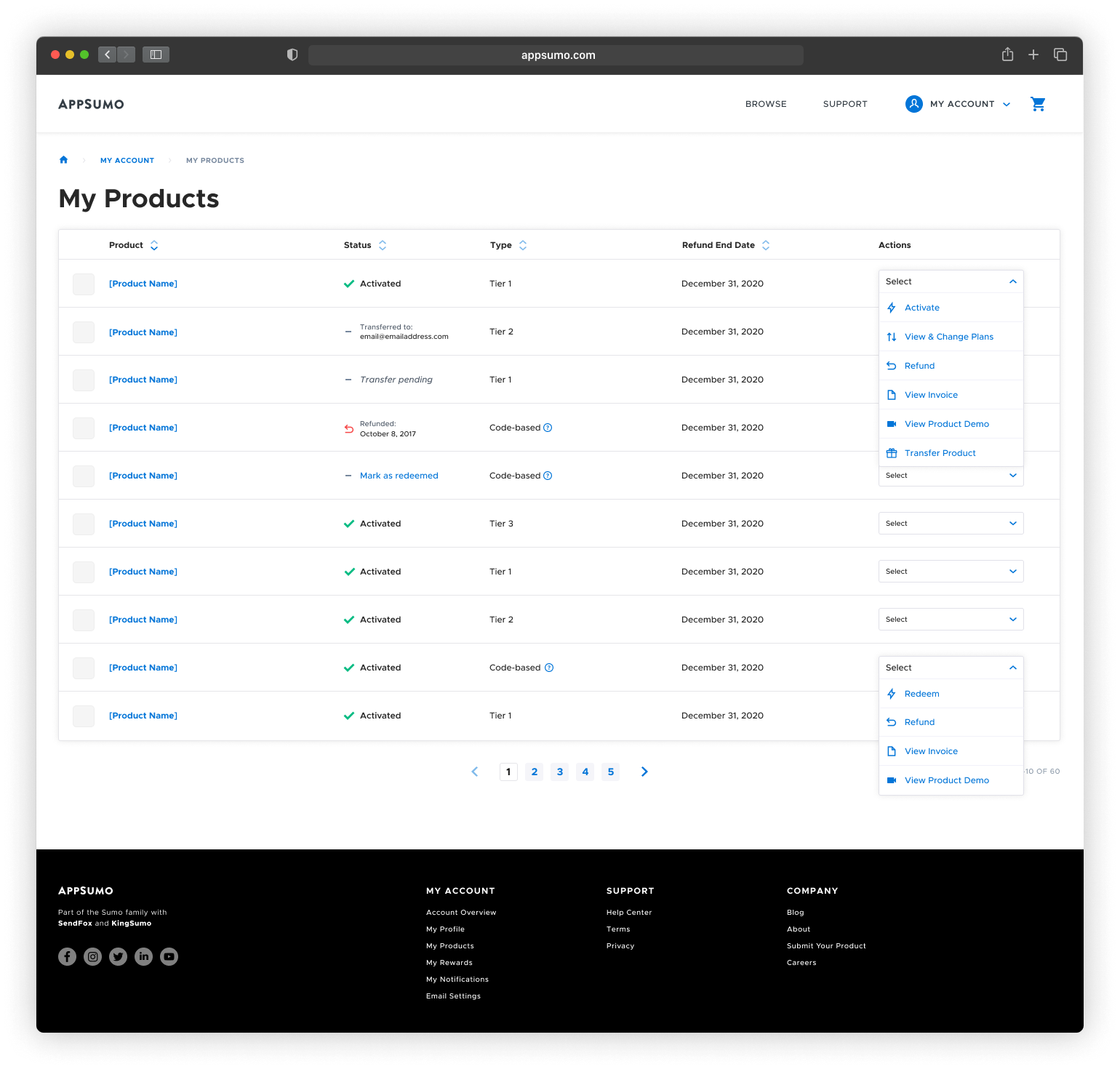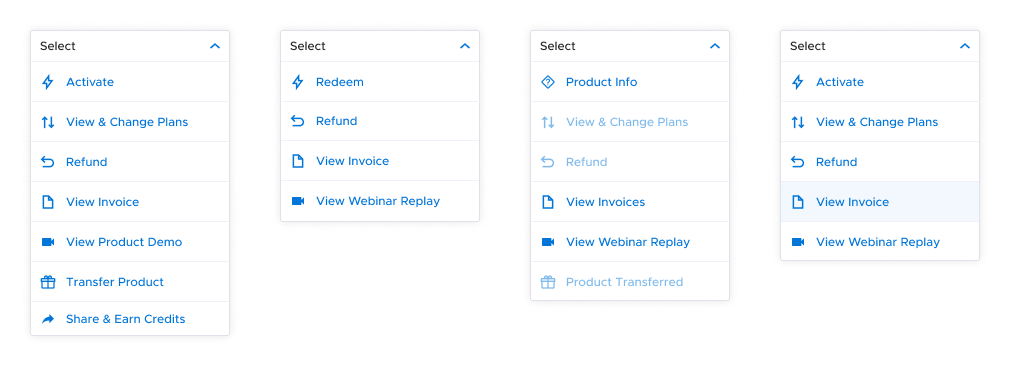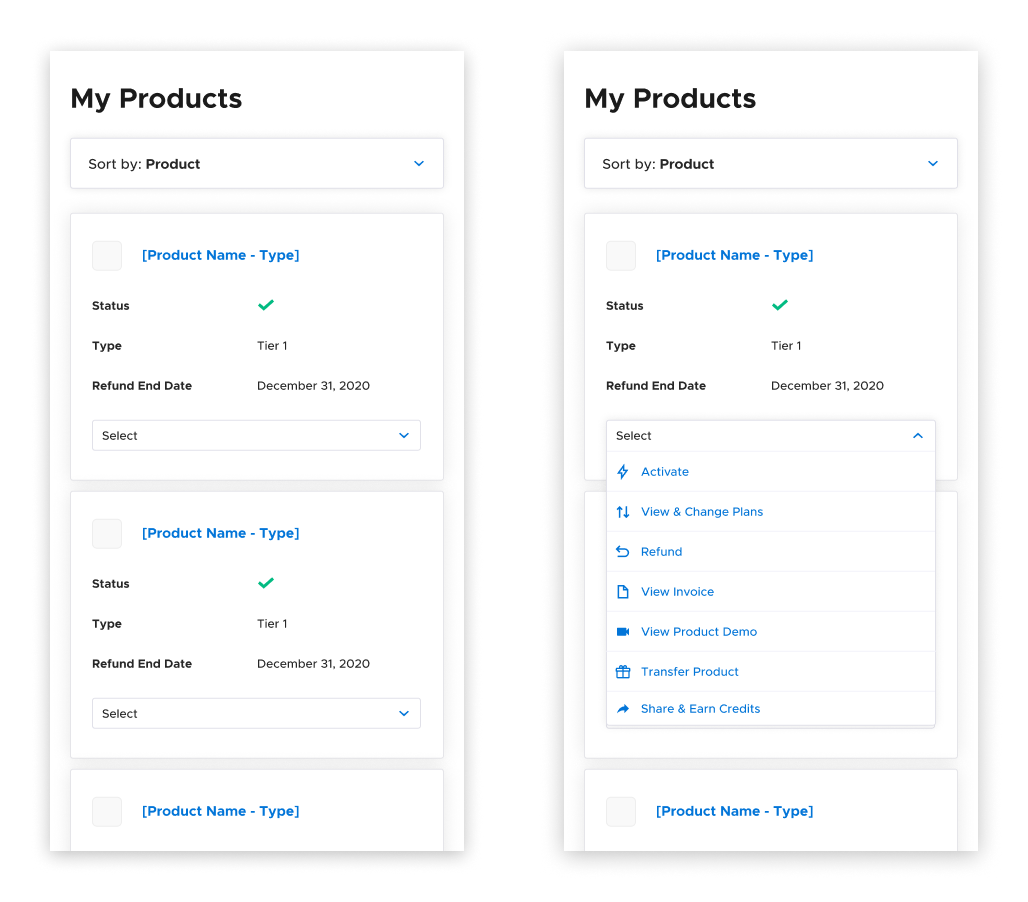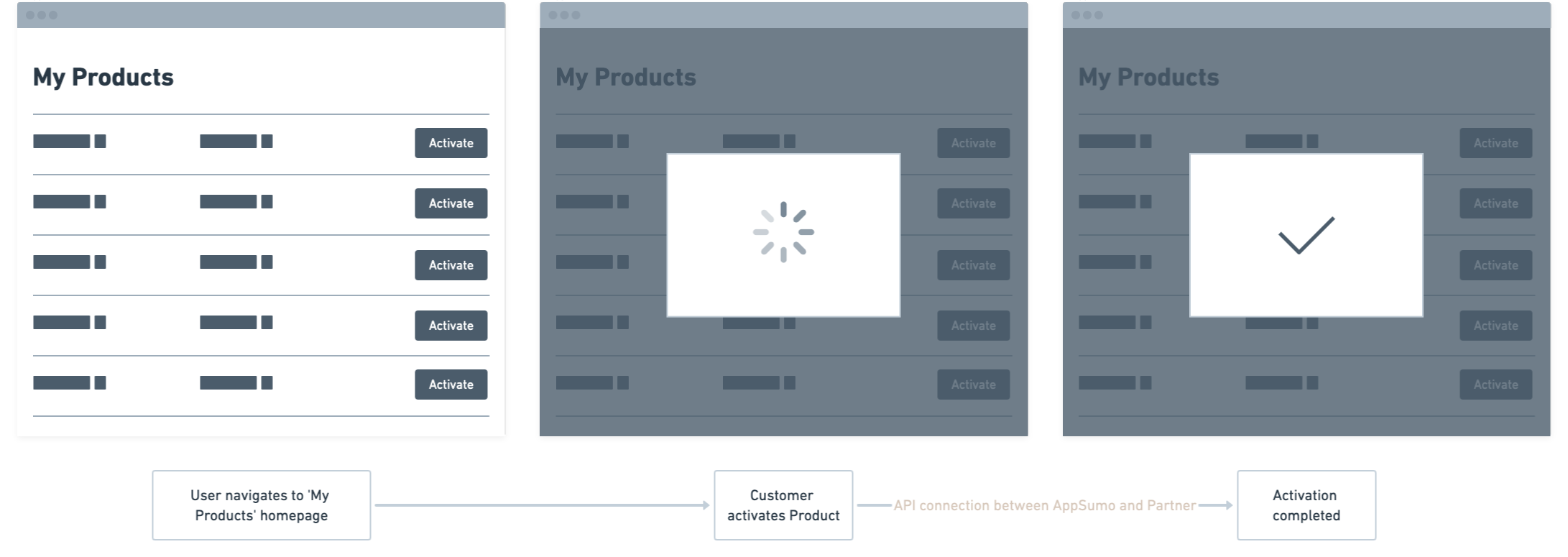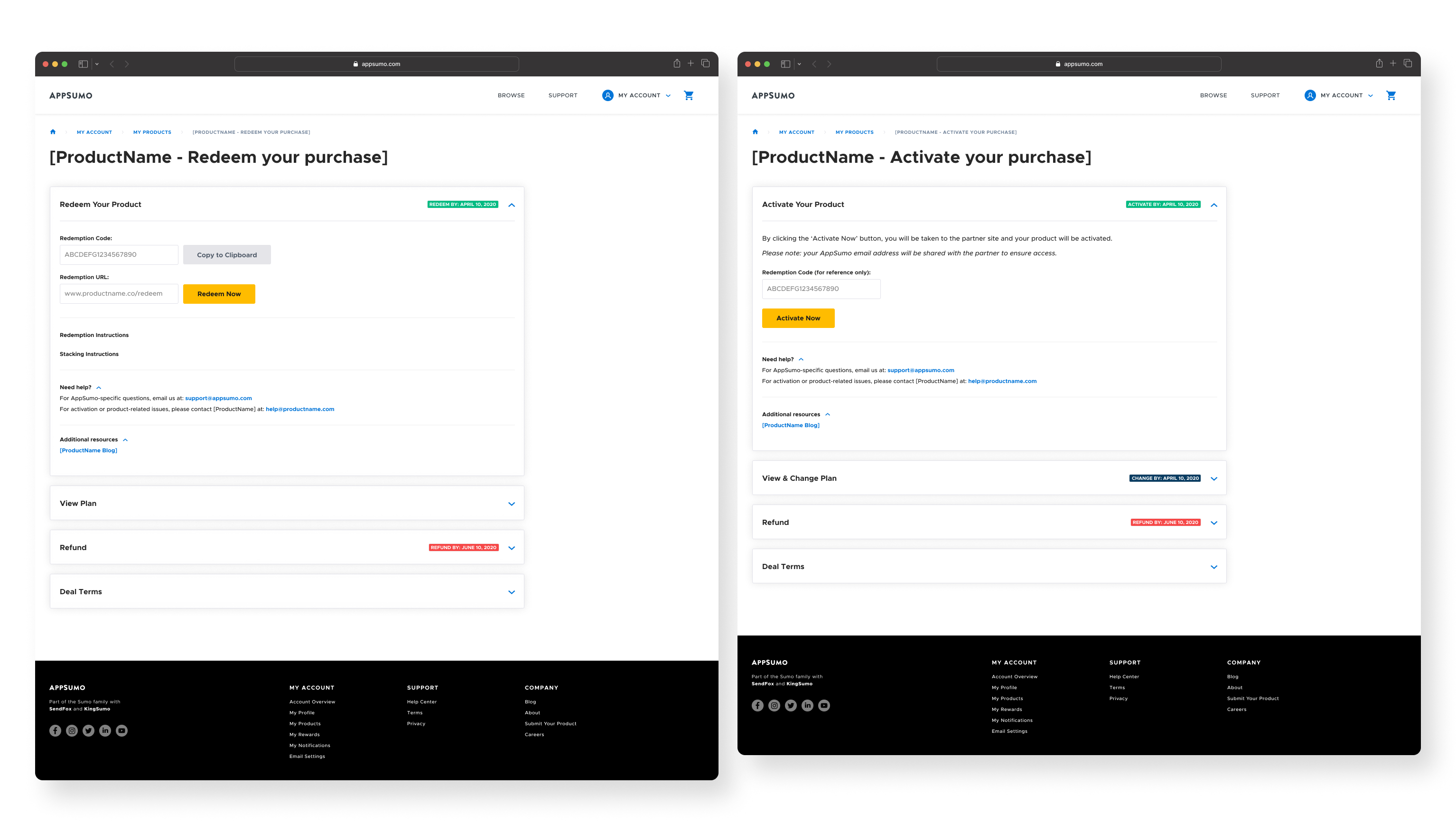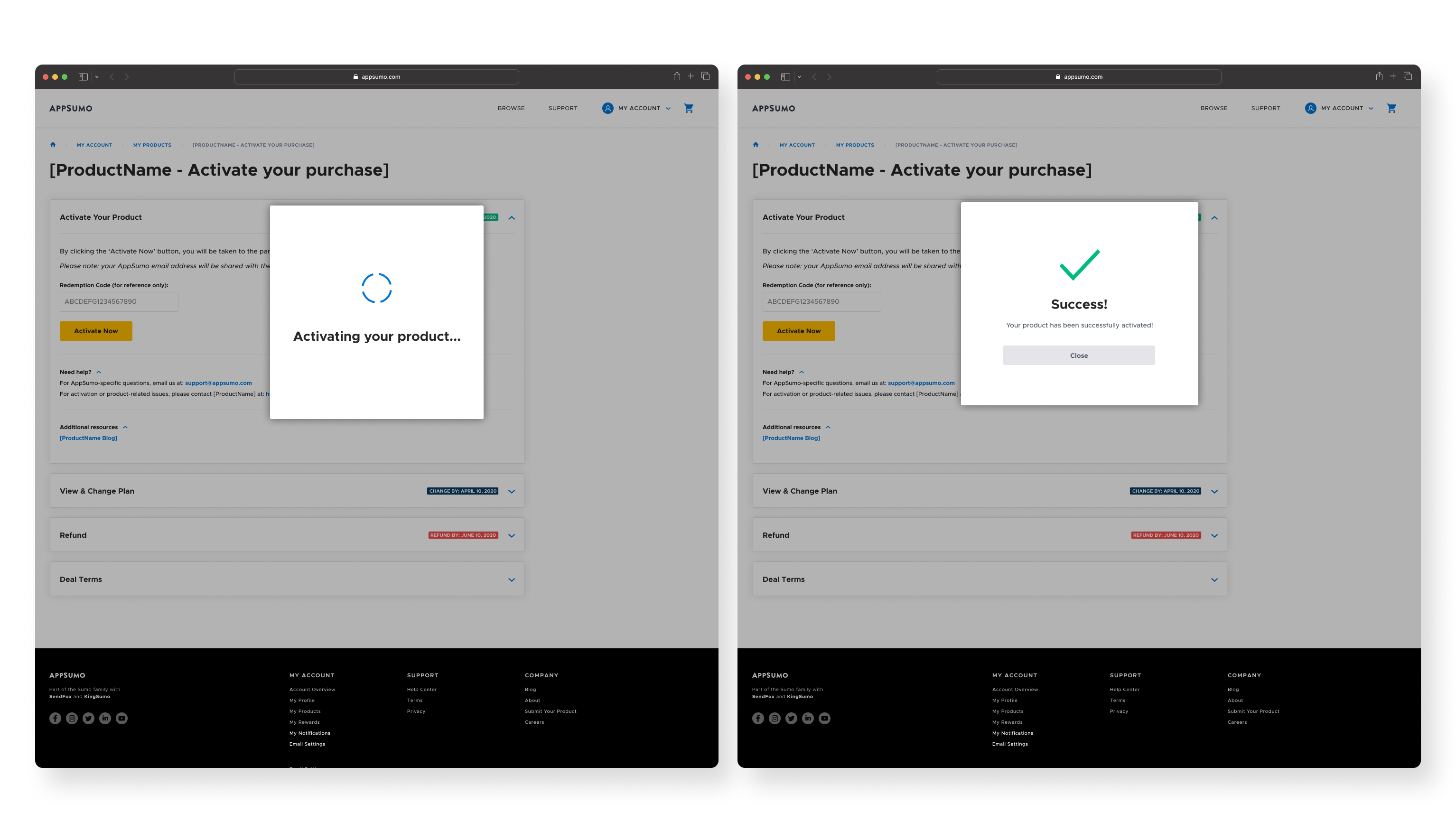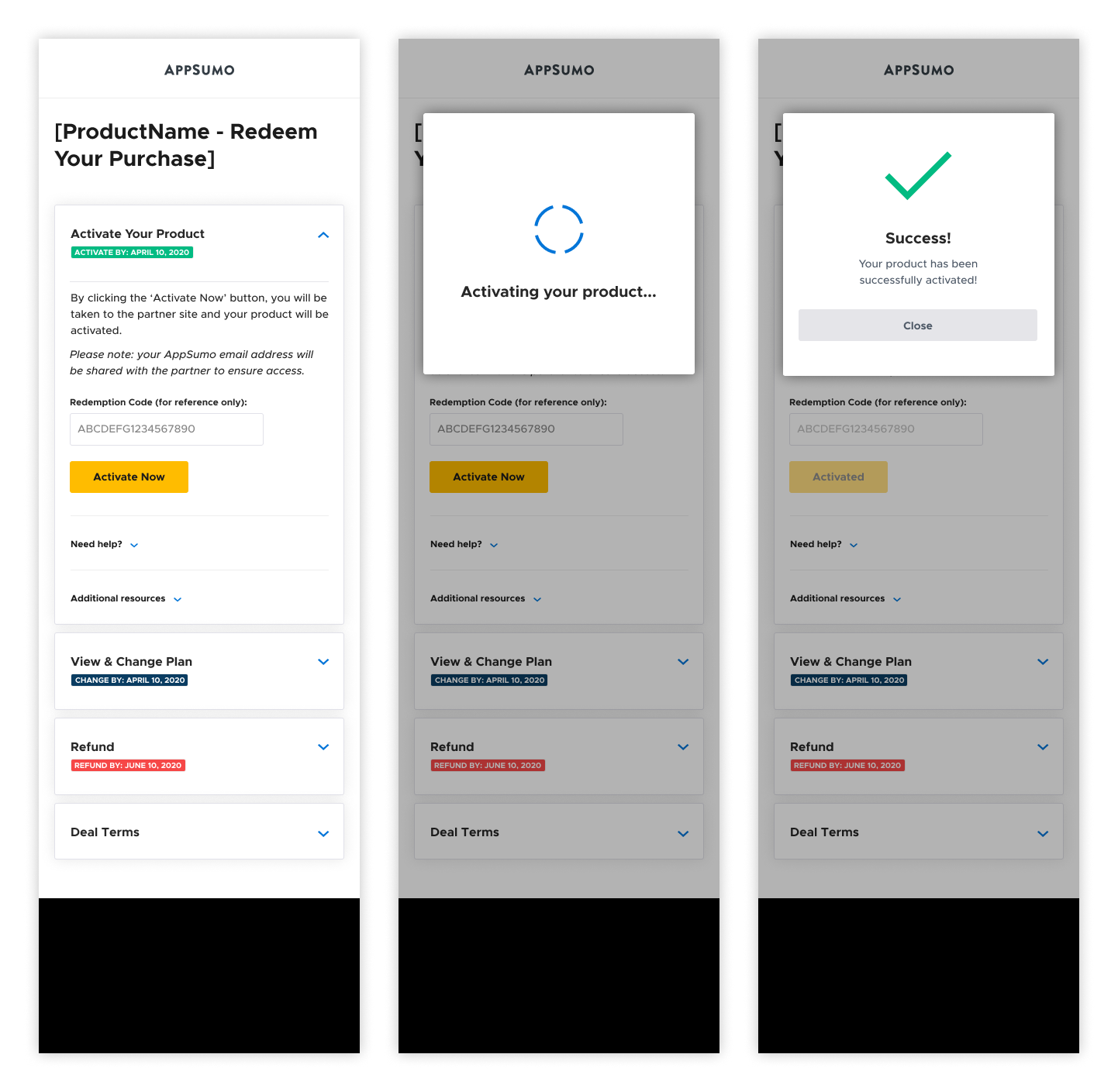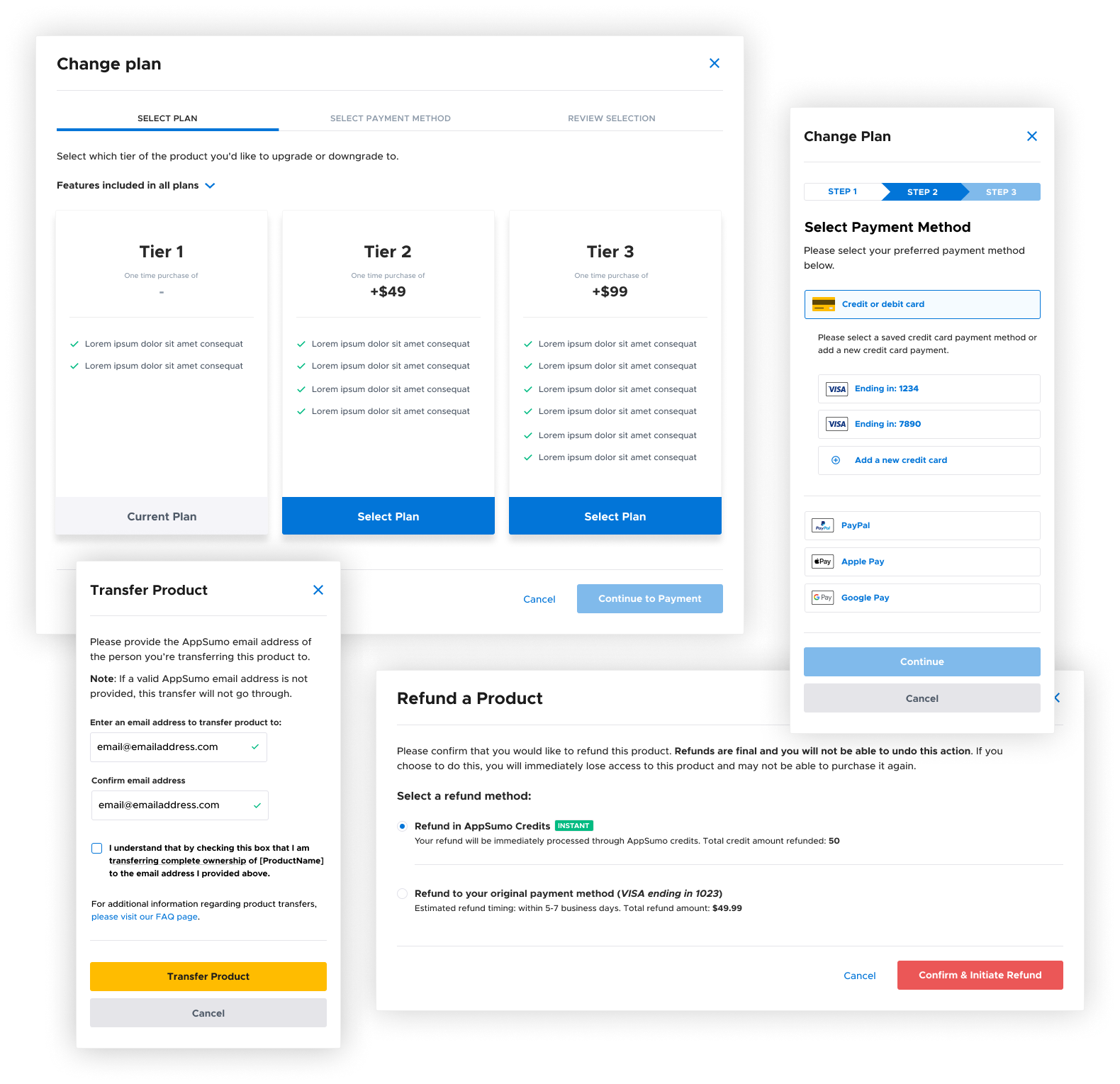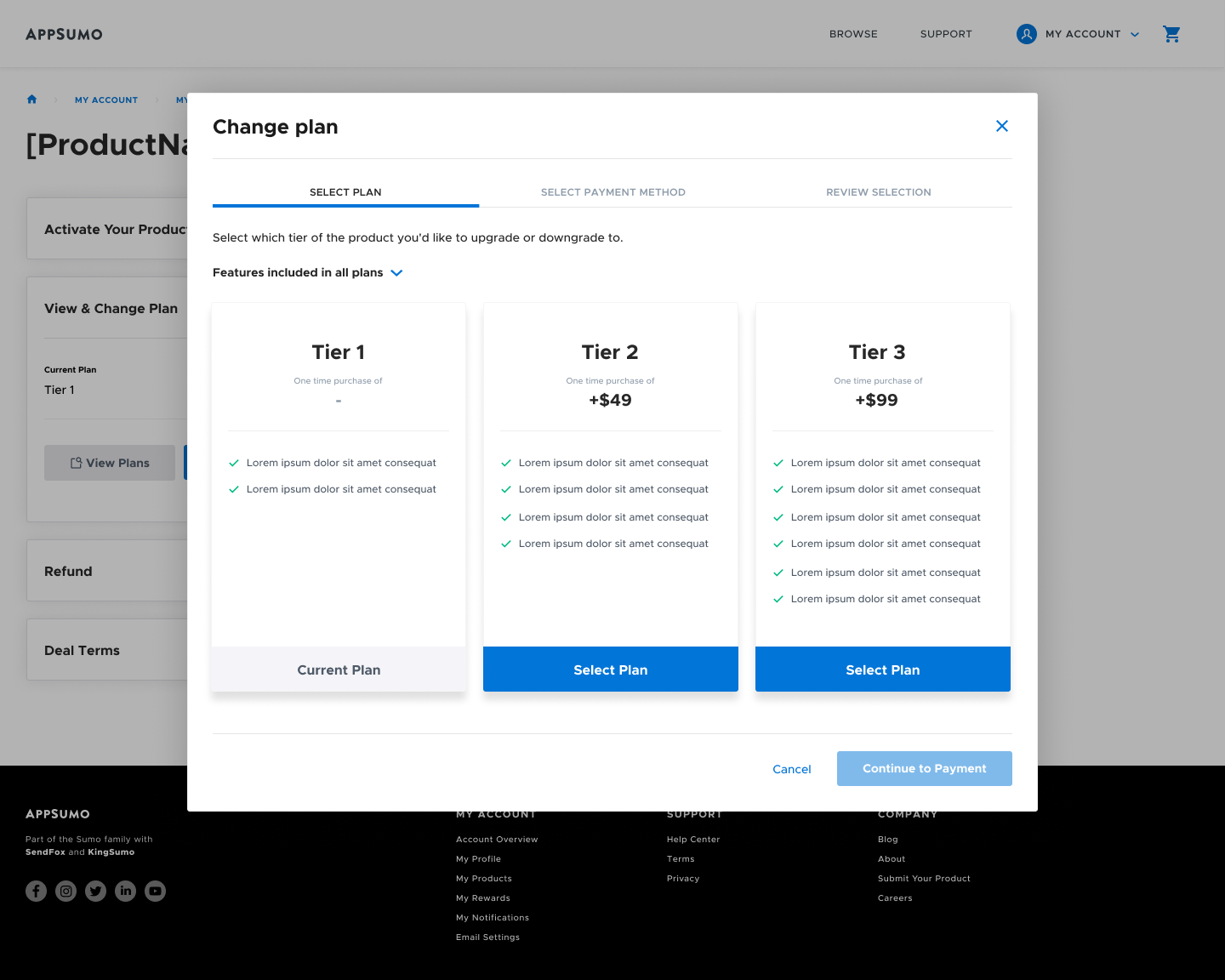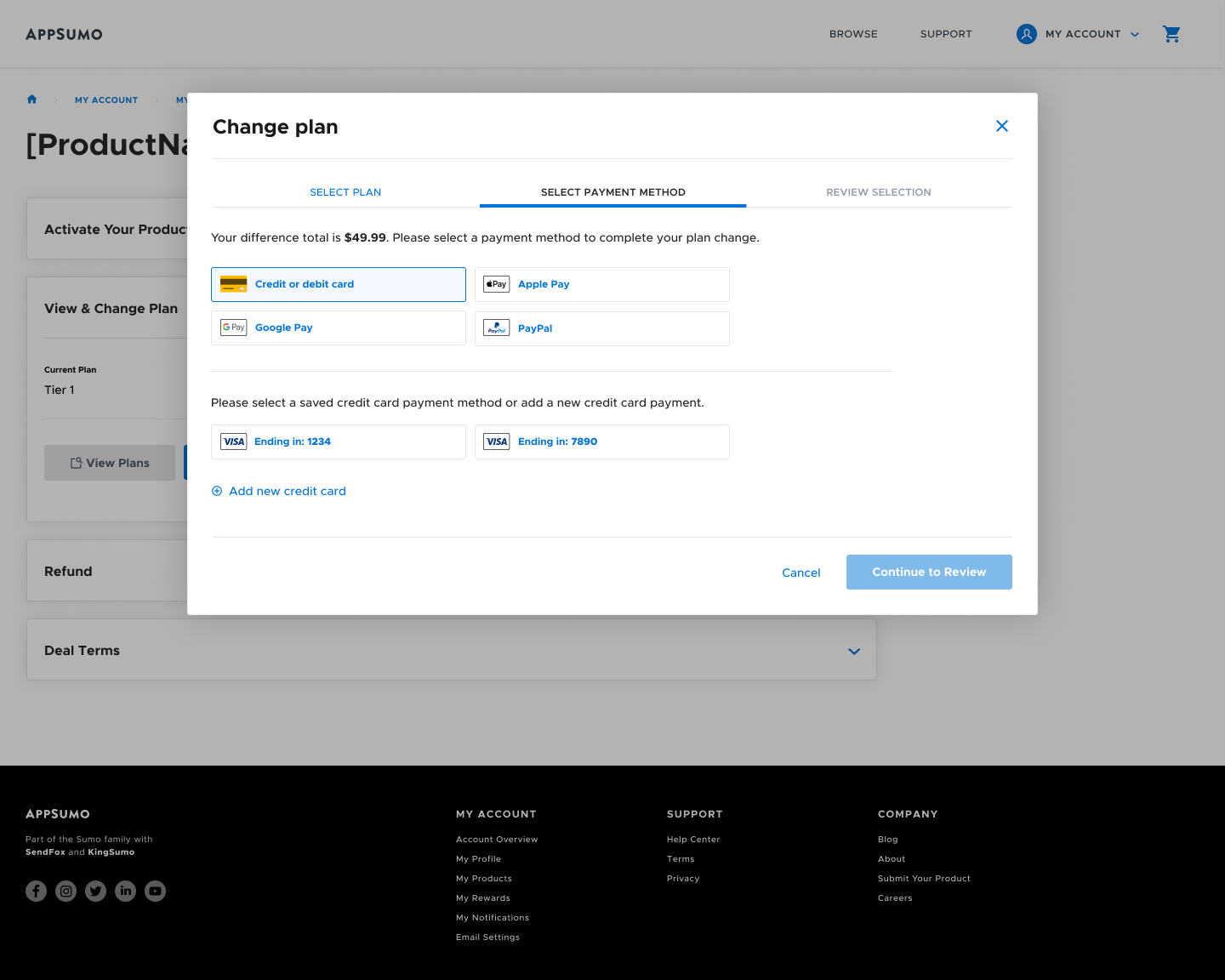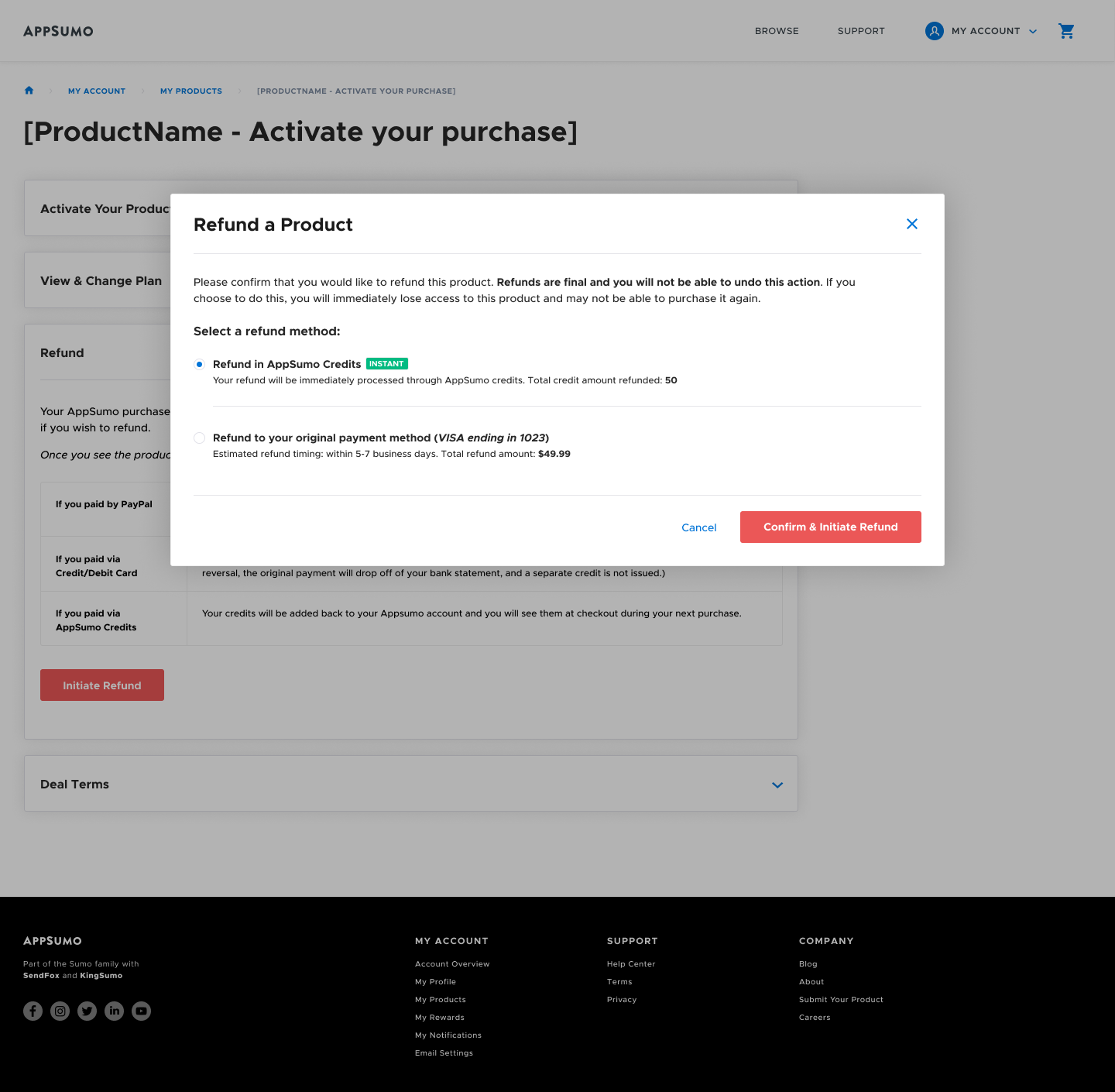Background
AppSumo's core business involved partnering with software makers to resell their products on the AppSumo website. Product distribution involved partners sending alphanumeric codes to AppSumo via email. We then tested and validated each code, creating activation instructions for customers. Approved codes were entered into our inventory database, and customers received both a code and activation instructions upon purchase for access on the partner's website.
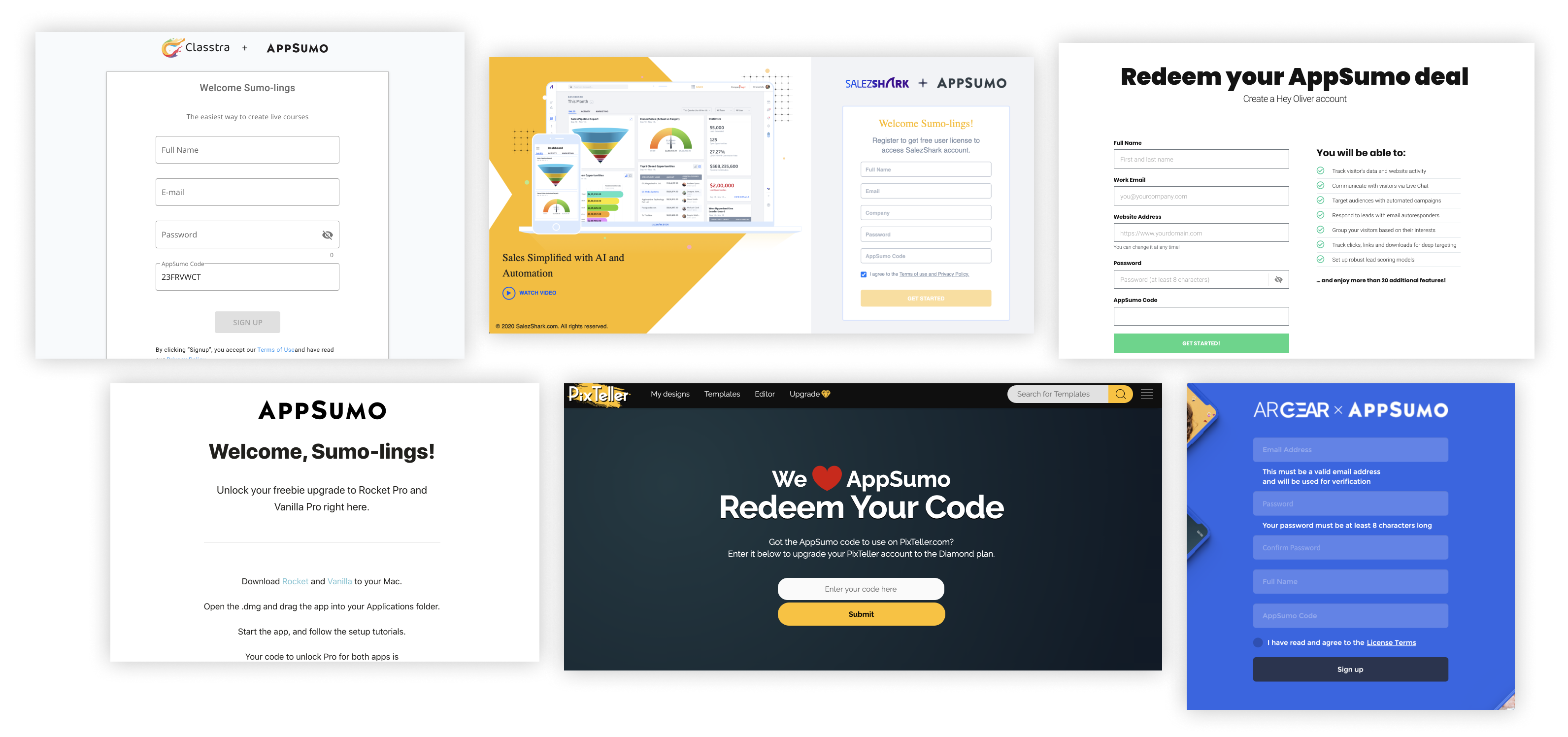
As this was a very manual and multi-step process, the cracks of this distribution model and process quickly began to show when launching and selling multiple products.
Existing challenges
-
The activation process could vary greatly between one product to another (especially in consideration to a company's resources and/or method of implementation), creating confusion and frustration for customers.
-
Testing and validating product codes was time intensive to validate between AppSumo and its partners. Initial delivery of codes were often found to be 25-33% defective due to incorrect formatting.
-
Fraudulent individuals could "refund and resell" products purchased via codes due to lack of auditing active and inactive codebases, creating corruption and confusion within the market.
-
The only way to provide more features for a given product (e.g. basic, standard, deluxe editions) involved purchasing multiple codes of the same product, called stacking, which was complicated for new customers to understand.
-
Since activation was a separate process between the customer and partner, AppSumo had no confirmation or digital breadcrumb as to whether customers actually activated their purchases, hindering our ability to provide relevant product management options.
-
Select actions (such as upgrading and downgrading) were not currently available on the product management page. These types of requests or refunds were resolved through lengthy customer email exchanges with our support teams.
During a company retreat, I had a discussion with the Head of Engineering about the challenges we were facing with using a code-based distribution model coupled with an ambitious revenue forecast for the following year. We knew that given the problems we faced, using codes was unscalable for our needs and improvements on the existing distribution model were moot.
Despite our unique business of selling business/SaaS software, our conversation quickly gravitated to comparative marketplace examples like Steam and Epic Games that shared many common themes and requested features.
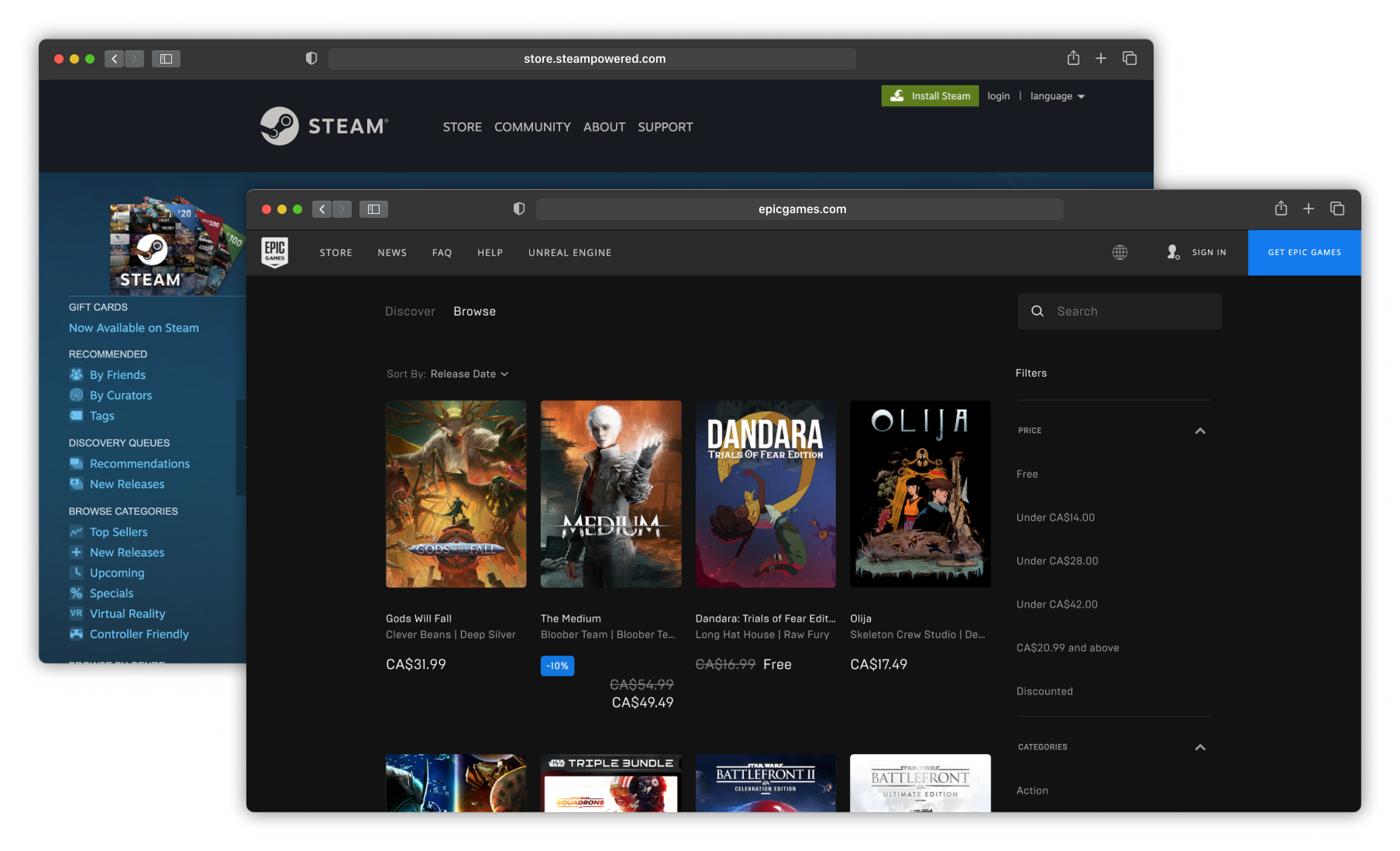
What if we could leverage APIs as a distribution platform to accommodate scale and growth for the company?
